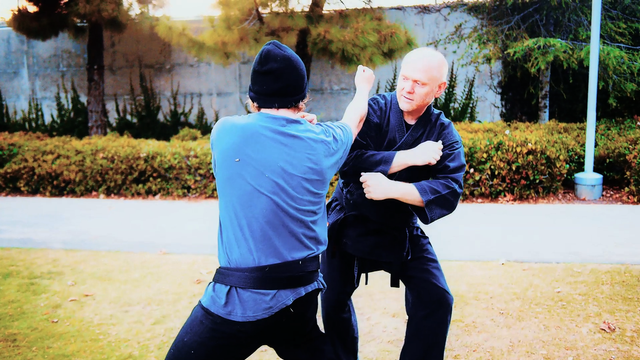The Crux of Jumonji

We warmed up with three 十文字の構 jūmonji no kamae kihon. Many people in the Bujinkan may not be aware that there is more than one. I was taught these three in Japan so I shared them with my students.
For the main part of the class, I continued on my own personal shugyo studying Hatsumi Sensei’s teaching about jūmonji. I began by receiving the attack in the cross of the jūmonji. Then by repositioning my body, his arm is locked. I release the tension this creates and the opponent throws himself.
Soke showed this with a level change. He told us, “Jūmonji upwards. This way of changing hands is important. Slip out in a different direction. It’s 空間の九勝 kukan no kyūshō. Now using the elbow.” I wrote previously about Hatsumi Sensei’s idea of 空間の九勝 kukan no kyūshō here.
I demonstrated this with high and low attacks. Find the tension inherent in them. Then release to counter. Hatsumi Sensei described it further, “Within the flow of the kukan (kukan no nagare), you want to control these very small points such as the fingers, the eyes , or the breath. You’re taking those points, but in a way that it is difficult for the opponent to perceive.”
We continued against multiple attacks. The cross of jūmonji acts as a strong shield. But it has the natural flexibility to trap and shift. The opponent gets tangled in his own attack.
Next, I had the attacker slice or stab with a knife. He had no idea that I also was hiding a knife. As I receive his attack, my own knife forms one arm of the jūmonji cross. Or I might continue to hide it along the line of the opponent’s own attack. Either way, I end up snatching his weapon from him in the manner I studied with Soke in Japan.
Of Note: Prius can opener